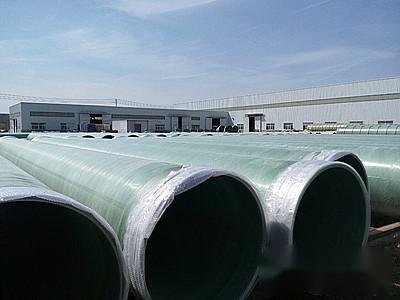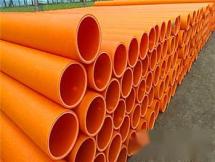Website: www.xgguan.com Phone: 18848857820
Applications of Glass-Fiber Reinforced Sand Pipes:
◆ Main water supply pipelines and distribution pipes for drinking water
◆ Sewage pipelines, stormwater pipelines
◆ Irrigation pipes for agriculture
Main Forming Process of Glass-Fiber Reinforced Sand Pipes
Controlled by a computer, the inner lining is manufactured on the core mold using the same process as the fiber-wound glass-fiber reinforced pipes. After gelation, the structural layer is wound according to the designed line shape and thickness, and a slurry of quartz sand mixed with resin is wound into the structural layer, followed by the outer protective layer winding.
Raw and Auxiliary Materials: Resin, chopped fibers, continuous glass fibers, and quartz sand.
Product Specifications
Diameter: DN100-4000
Pressure Ratings: 0.1MPa, 0.6MPa, 1.0MPa, 1.6MPa, 2.0MPa, 2.5MPa
Stiffness Ratings: SN1250, SN2500, SN5000, SN10000.
Length: Commonly 4m per piece
【Raw and Auxiliary Materials】
Resin, glass fiber mat, glass fibers, etc.
【Span Calculation】
Glass-fiber reinforced pipes are often used in underground pipelines; thus, span calculations are necessary due to the span issues associated with underground pipelines.
Underground pipelines are supported by pipe racks, hangers, and brackets, and the distance between two support points is known as the span of the pipeline. The span cannot be too large as it will affect the normal operation of the pipeline. If the span is too small, it will result in a denser arrangement of pipes, thereby increasing costs due to the increased quantity of pipes used. To ensure the safety and normal operation of the pipeline, it is advisable to maximize the span of the pipeline.
To address the span issue, two conditions must be determined based on the strength and stiffness of the pipeline:
(1) Determine the pipeline span according to strength conditions
Under external load, the stress at the pipeline interface must not exceed the allowable stress of the glass-fiber reinforced pipe.
(2) Determine the pipeline span according to stiffness conditions
【Installation of Glass-Fiber Reinforced Pipes】
Principles of Pipeline Installation
The sequence of pipeline installation follows the principles of sectional division, system division, starting with larger diameters to smaller diameters, installing lower layers before upper layers, starting with the more difficult tasks before the easier ones, and connecting to the equipment after the installation of the upper pipe gallery. Generally, pipelines connected to machines should be arranged from the inside to the outside to minimize the impact of welding stress on the precision of machine installation. The joints between indoor and outdoor pipelines should be left outdoors.
1. Pipeline Installation Requirements
1. Before installation, the pipeline should verify the device pipe openings, embedded parts, reserved holes, steel structures, and other content related to pipeline installation.
2. The slope of the pipeline should be adjusted according to the requirements in the drawings, and the adjustment can be made using supports to meet the slope requirements. Welds should be positioned in places convenient for maintenance and inspection.
3. Pipelines connected to drive equipment should be cleaned internally before installation. The welding of fixed pipe openings should generally be far from the equipment to avoid the impact of welding stress on the precision of drive equipment installation.
4. Before connecting the pipeline to the machine, strong opposing forces should be prevented, and the parallelism and coaxiality of flanges should be checked in a free state.
5. Safety valves should be installed vertically, and timely calibration of the safety valve should be performed during trial operation. The final calibration of the safety valve should be conducted on the system, and the opening and reseat pressure must comply with the specifications in the design document.
6. Before valve installation, verify its model according to the design document and determine its installation direction based on the flow direction of the medium. When the valve is connected to the pipeline via flanges or threads, the valve should be installed in the closed position; if installed by welding, the valve should not be closed.
7. Temporary Replacement of Instrument Components: All instrument components should be temporarily replaced during installation. After pressure testing, flushing, and blowing work are completed, formal installation should take place before material input.













